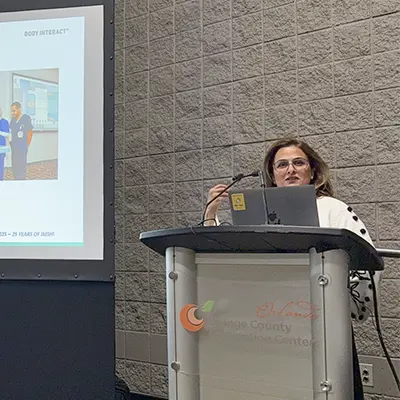Flip Thinking with Clinical Virtual Simulation
Flip Thinking: The Life-Changing Art of Turning Problems into Opportunities
Berthold Gunster wrote the book “Flip Thinking: The Life-Changing Art of Turning Problems into Opportunities” which presents 15 strategies for “turning problems into opportunities. Its primary goal is to shift readers’ mindset from problem-focused (“yes, but”) to opportunistic (“yes, and”) using the Dutch art of flip thinking: Omdenken philosophy.
The Omdenken philosophy applied to clinical simulation
While reading this extraordinary book, we can identify three great strategies that can connect with Body Interact – Virtual Patient Simulation:
- Perseverance
- Focus / Concentration
- Rethinking
The benefits aligned with the implementation of clinical virtual simulation are validated by the international research developed by Nursing and Medical educators. From critical thinking and clinical judgment to decision-making and problem-solving, virtual patients enable current and future healthcare professionals to practice in a mistake-free environment. It allows learners to deliver high-quality care without compromising patient safety.
Nevertheless, the opportunity to repeat the same clinical scenario represents significant advantages. In the same way, social skills enhancement, such as teamwork, leadership, and communication, offers additional valuable reasons for implementing Body Interact in an institution’s curriculum.
Drawing from Gunster’s strategies, let’s dive into the three key concepts presented by the author with a clinical education innovative approach with Body Interact:
Perseverance – Continue enhancing practice until they master. Don’t focus your learning strategies on memorization but on the rationale beyond each student’s decision. Help them understand so they can feel confident to apply the same reasoning once encountering similar situations with real patients.
Focus / Concentration – Keep your students’ eyes on the final goal: helping patients improve their clinical condition, in the safest way, and with up-to-date clinical knowledge.
In clinical settings, clinical knowledge isn’t the only domain healthcare professionals have to develop. Healthcare professionals have to work together, so it is important to foster teamwork and knowledge sharing.
Rethinking – If they don’t find the solution, pause the scenario, ask questions, and promote knowledge research. Why not introduce artificial intelligence tools in your class to help learners ask questions and go further on their rationale?
Flipped Classroom with Virtual Patient Simulation
With the Flipped Classroom model, students engage with the material beforehand by watching videos, listening to podcasts, reading, and completing exercises. This approach frees up class time for dynamic discussions and critical analysis through clinical scenarios.
Instead of following the traditional class model, educators are challenged to flip thinking and dedicate class time to continuous improvement and swapping from a lecturer role to a consultant or mentor.
Professor Brittany Maxwell, Assistant Professor of Nursing at St. Elizabeth School of Nursing, University of Saint Francis, successfully employs this strategy with her nursing students. Supported by the Body Interact simulator, she promotes an engaging and interactive learning strategy in class.
Discover more about this pedagogical approach in our blog article, “Pedagogical Approaches with Body Interact: Flipped Classroom”.









